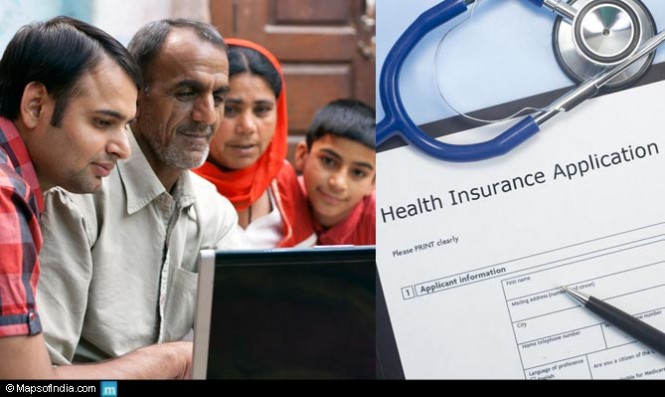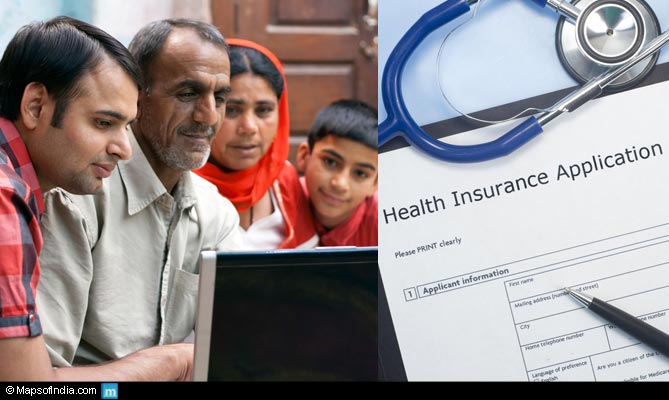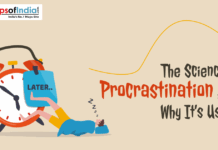 India is the 10th largest economy in the world, and the 3rd largest in terms of purchasing power. These figures portray a very optimistic picture. But a recent study by the Planning Commission in 2012 (Tendulkar Committee) shows that people below poverty line in India amount to 250 million, with 200 million living in the rural areas. The picture gets even more dismal with the fact that according to the new methodology of the World Bank in 2014, of 872.3 million people below poverty line in the world, 179.6 million people came from India. India contributes towards 17.5 per cent of total world’s population and had a share of 20.6 per cent of the world’s poorest in 2013. In short, poverty is very much a reality in India, which needs to be addressed in relation to many issues. One of the main issues is the health insurance.
India is the 10th largest economy in the world, and the 3rd largest in terms of purchasing power. These figures portray a very optimistic picture. But a recent study by the Planning Commission in 2012 (Tendulkar Committee) shows that people below poverty line in India amount to 250 million, with 200 million living in the rural areas. The picture gets even more dismal with the fact that according to the new methodology of the World Bank in 2014, of 872.3 million people below poverty line in the world, 179.6 million people came from India. India contributes towards 17.5 per cent of total world’s population and had a share of 20.6 per cent of the world’s poorest in 2013. In short, poverty is very much a reality in India, which needs to be addressed in relation to many issues. One of the main issues is the health insurance.
Health of the poor
Lack of adequate housing and sanitary facilities, along with other factors, including factors relating to work, habits, lifestyles, lack of nutritious food, etc. result in the poor falling prey to many diseases and disability. Apart from diseases related to lack of sanitation like diarrhoea, malaria, dengue, and work related diseases and disabilities like asthma, lack of nutritious food causing malnutrition, non-communicable diseases (NCDs) like diabetes, heart problems, cancer etc. are as much prevalent among the poor as the rich. In many cases, the poor just do not know it, and even if they are in discomfort, the expensive hospitalization and prescriptions deter them from seeking medical attention.
Awareness about health insurance
The stage of development of health insurance in India may be described as at an embryonic stage, with the poor unaware of it, and thus not taking advantage of the same. Some of the reasons for this state of unawareness among the poor are:
- Illiteracy. Education is a key factor in influencing the decision to opt for insurance. Absence of the same makes the poor unaware of the advantages of health insurance.
- Lack of information is also a major factor. Financial literacy, and information, both are lacking in the poor.
- At the very onset, the decision to avail insurance is influenced by factors like agents, friends and relatives. With the maximum population of the poor in rural areas, the friends and relatives of the poor are also in a similar situation and thus are not qualified to give advice; and the agents of insurance companies find it difficult to reach the most remote corners to counsel them and thus the rural market remains untapped.
- A family below poverty line, which is already struggling to put food on the table, has a different set of priorities, and misinformation that they have to pay the entire amount of premium also keeps them away from insurance policies.
- Already under the burden of loans, the poor do not understand the merits of the credit policy, and believe it will further make them indebted.
Because of the aforesaid reasons, India’s insurance penetration is lower than the world average which in 2009 was 7.0 per cent, while for India it was 5.2 per cent.
Government intervention
Insurance was never an option for the poor in the past. Provision of free health services to the poor has not been very successful due to shrinking budgetary support to the public health services, inefficiency in provision, and unacceptably low quality of these services. Keeping in mind that even the poor can make small contributions periodically, and they would have the option of going to public or private service provider, the government has introduced the Rashtriya Swasthya Bima Yojna (RSBY).
The RSBY, launched in 2008, is a mammoth health insurance scheme for almost half a billion people who live below poverty line. It is an initiative undertaken by the Government of India to help the poor with medical treatment without their financial ruin. Thirty-six million families have obtained smart cards which entitle them to free medical treatment, in the past six years. Under the RSBY, insurance companies are tasked with creating awareness among the poor about the programme; that the poor are able to get hold of a smart card; which can cover up to five people. They then receive a premium from the State as well as up to 30,000 rupees a year for hospital treatment per family. Approximately 130 million people are insured under this scheme.
Conclusion
The socio-economic development and the health of the community are related to each other in such a way that one cannot be achieved in isolation. No doubt, the economic development in India is gaining momentum because of the Government initiatives in public health care facilities, yet its health system is at crossroads today. It is very important that the Government take further initiative to include the maximum number of poor in the health care programmes and cover them with insurance. The success of an insurance awareness campaign would depend upon:
- A good understanding of what people think about insurance as a concept;
- Educating people about various aspects of insurance of which they are unaware.
Hence, in order to make informed choices, people should be educated about the concept of insurance, the various types of insurance covers available, and the benefits that an insurance cover could yield. It is time for every citizen of India to avail of medical treatment without facing the liability of a financial crisis.
It’s time for a better tomorrow.




